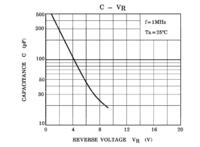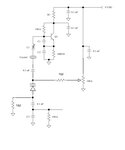neazoi
Advanced Member level 6
Hello I have an HF oscillator (vco) that uses a varicap. The varicap is the 1sv149
I have noticed that if I drive the varicap with 0-2.5v there are no harmonics or spurious generated, whereas when I drive it harder (2.5v-9v) small amount of harmonics start to appear.
It seems that the higher the voltage applied to the varicap the more the harmonics and spurious out of it. Maybe it is operating more in it's non-linear region?
Has anyone encountered this issue before, is it true?
I have noticed that if I drive the varicap with 0-2.5v there are no harmonics or spurious generated, whereas when I drive it harder (2.5v-9v) small amount of harmonics start to appear.
It seems that the higher the voltage applied to the varicap the more the harmonics and spurious out of it. Maybe it is operating more in it's non-linear region?
Has anyone encountered this issue before, is it true?

